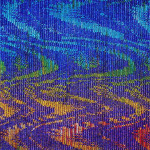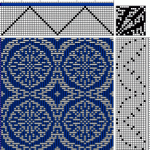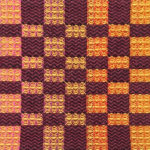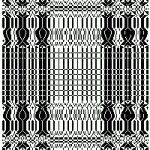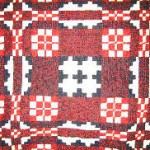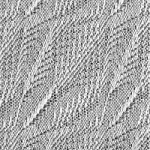
The object of the Fine Threads Study Group is to encourage weaving with finer threads. Members set their own definition of ‘fine’.
Membership in the Fine Threads Study Group has a 12 month cycle. In the fall of each year an invitation is extended to those who have expressed an interest in joining, and to those who participated the previous year. Requirements are paying annual $15 fee and submitting a set of samples in May. Some members who do not live in the United States have joined for two years to save on currency conversion fees. In January each member receives a roster.
In March, members are reminded that samples are due in May. After the samples have been collected, they are compiled and a complete set is mailed to each member in June or July. Mailings include tips and questions from members, citations of articles published by study group members, and anything else for the common good.
The number of members determines how many samples must be submitted. Each member must submit enough samples for the entire roster, plus one extra for the Complex Weavers Library. Each sample is to be mounted with a draft and pertinent information, along with any problems and their possible solutions.
Beginning with the 2002-2003 Fine Threads Study Group, members give implicit permission for their sample submissions to be put on a”backup” CD to be kept in the CW archive. And, of course, each member receives a complete set.
Each sample should be an entire pattern, or at least a quarter of one. Some samples have been as small as 1″ square. Most of them are larger, but all of them are beautiful! There are no restrictions regarding weaving skills. All you need is an interest and desire to weave with fine threads on more than four shafts.
The Fine Threads Study Group has met only by mail. Most of us have e-mail and it is a convenient medium to exchange questions and answers. If the leader doesn’t have the answer, often another member will. Except for sample exchanges, the study group mailings are via e-mail with attachments. Hard copies will be sent when attachments can’t be opened and read or e-mails are not acknowledged.
In 1990 at Complex Weavers Seminars, someone suggested a study group on fine threads. In 1991 CW Study Group Coordinator, Peggy Hoyt, asked Lillian to take it on and the group began in the fall of 1992. Lillian has tried to keep the organization as simple as possible. The problems and solutions shared are very informative and encourage each of us to continue pursuing beautiful fabric.
The sample above was woven by Claire Ehernberger for the 2002 Fine Threads sample exchange. The pattern is called Jet Stream and is an adaptation from a workshop by Emily Dubois. The warp and weft are 60/2 silk sett at 60 epi.
